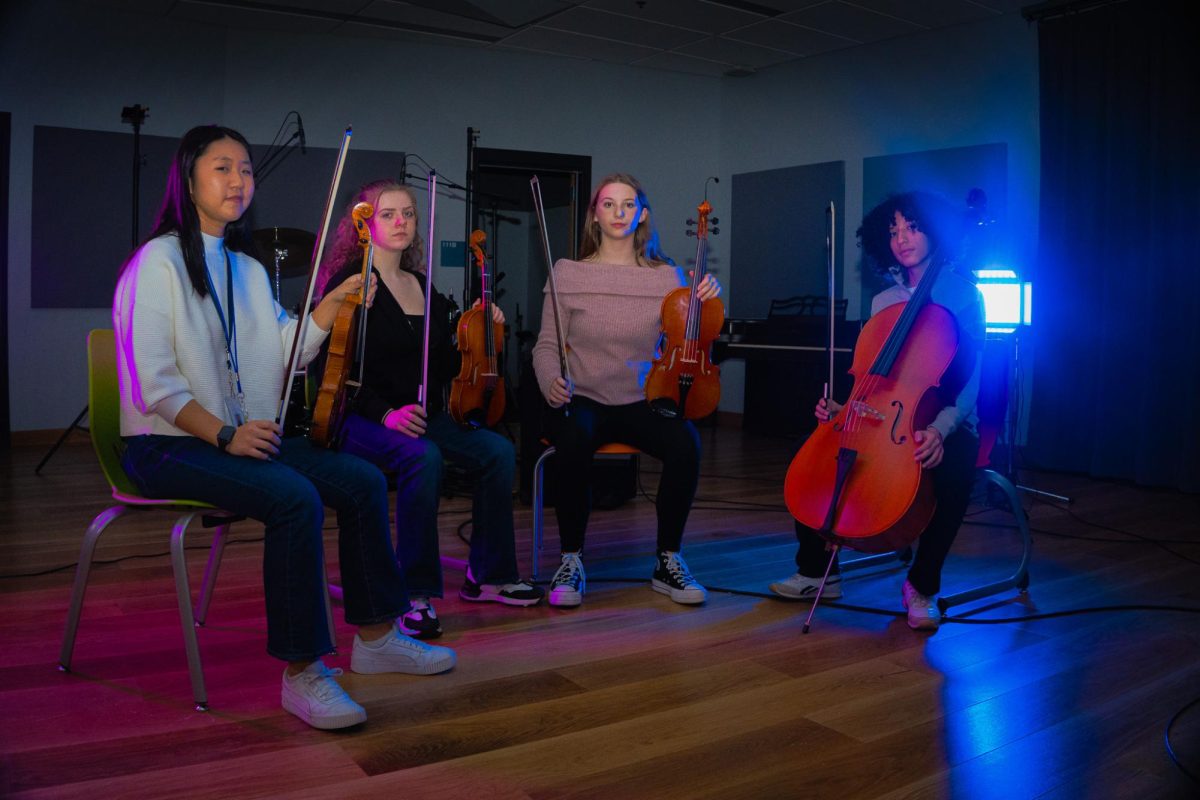An estimated 13% of Americans are disabled and yet, when it comes to providing adequate services for students with disabilities, Fayette County Public Schools, FCPS, is falling short. Despite efforts to create inclusive environments, there are still significant gaps in accessibility and support for students with disabilities. These shortcomings affect not only the students but also the families and educators of students with disabilities.
The United States has instituted multiple acts to ensure that students with disabilities have access to free, appropriate public education. The Individuals with Disabilities Education Act, IDEA, first passed in 1975, and later reauthorized, mandates that public schools provide an inclusive environment for students with disabilities. Under this federal law, schools are required to provide a “least restrictive environment” (LRE), where students with disabilities have “the opportunity to interact with their non-disabled peers whenever possible”.

Additionally, the Americans with Disabilities Act, ADA, signed into law in 1990, further mandates that public schools ensure that their facilities and programs are accessible to all students, regardless of their physical or cognitive challenges. These legal requirements have pushed many schools across the nation to improve their services for students with disabilities, from physical accessibility to offering tailored educational programs.
One of the most glaring issues is the lack of physical accessibility. While many newer school buildings in the district comply with ADA standards, older schools still have significant barriers. These barriers can range from inaccessible classrooms to outdated or nonexistent elevators in multi-story buildings. For students with mobility impairments, this can mean the difference between being excluded from certain classes and activities or even being able to attend school.
Some older schools such as Lafayette present particular challenges. These schools that were built before ADA requirements were enacted don’t have the structural flexibility to be easily retrofitted to meet modern accessibility standards. The result is that students with physical disabilities are often relegated to specific classrooms.

Beyond the physical structure, some schools also lack accessible technology. While federal and state programs aim to provide assistive technology, many schools struggle to secure the necessary funding or resources to implement these tools effectively. Assistive technologies such as text-to-speech software, screen readers, and adapted keyboards are critical for some students with learning disabilities.
A significant issue is the shortage of special education teachers and support staff. As of recent reports, the district has faced ongoing challenges in recruiting and retaining qualified special education professionals. This shortage results in overcrowded classrooms, leading to a lower quality of service for students. Furthermore, students with more complex needs, such as those with autism spectrum disorders or severe physical impairments, may not receive the individualized attention that they require.
In many schools, the existing special education teachers are stretched thin and responsible for multiple grade levels and different disabilities. This fragmentation leads to a lack of consistency in support and can result in missed opportunities for students. For instance, students with disabilities who need individualized education programs (IEPs) may not receive the full benefit of their accommodations if those IEPs are not actively managed or if teachers do not have the time or resources to implement them effectively.
Parents of children with disabilities report that they are forced to fight for necessary services and that the district’s response is slow or inadequate. This lack of communication between parents and schools can leave students in limbo, with their educational needs either not being met or poorly addressed.
While federal law mandates the inclusion of students with disabilities in general education settings, many students with disabilities in Fayette County Public Schools still find themselves segregated in special education classrooms, sometimes for the entire school day. This segregation can lead to feelings of isolation and exclusion, detrimental to the student’s emotional and social development.
The push for full inclusion, where students with disabilities are integrated into regular classrooms with their non-disabled peers, has not been fully realized in Fayette County. Research consistently shows that inclusion benefits all students, both those with and without disabilities by promoting empathy, social understanding, and academic collaboration. However, students with disabilities in Fayette County are placed in separate, isolated environments, limiting their exposure to diverse learning experiences.
The issue is particularly evident at the high school level, where students with disabilities may be excluded from elective courses, extracurricular activities, and advanced placement opportunities. This systemic exclusion not only hampers students’ academic progress but also diminishes their chances of developing the social and life skills needed for successful integration into society after graduation.
The financial implications of improving disability access in public schools are not trivial. Adding ramps, elevators, specialized equipment, and other accommodations to existing schools requires significant investment. Furthermore, adequate staffing for special education programs demands both financial resources and careful budget management.
However, school officials cite budget constraints as a reason for the continued lack of sufficient resources for students with disabilities. While it is true that school funding in Kentucky has historically been inadequate, the prioritization of resources remains a key concern. Advocacy groups argue that if the district were to prioritize spending on disability services, the long-term benefits for all students would outweigh the costs.
The lack of disability access in Fayette County is a significant issue that affects the lives of many students. While some efforts are being taken to improve accessibility and inclusion, these efforts have not gone far enough to ensure that all students have equal access to the resources and opportunities they deserve. The district must take bold action to address these issues—focusing on physical accessibility, increased staffing, inclusive classrooms, and better communication with parents. Only by prioritizing the needs of students with disabilities can Fayette County create an equitable and educational environment for all.






















